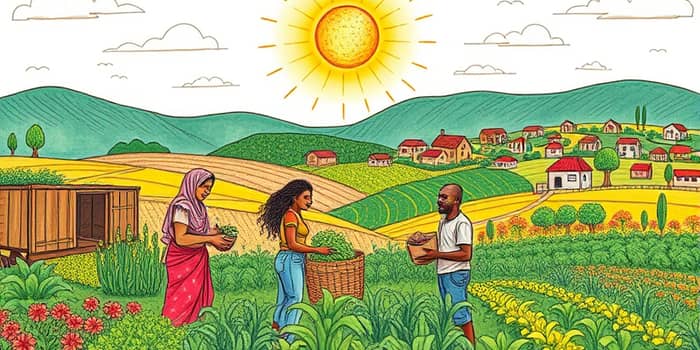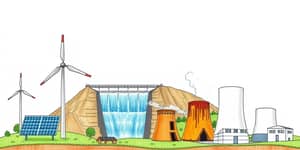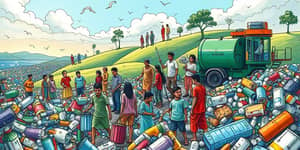When you pick up a cup of coffee or a bar of chocolate with the Fairtrade mark, you join a movement that transcends simple transactions. At its heart, fair trade is about dignity, justice, and solidarity—ensuring that those who toil in fields and factories receive the respect and rewards they deserve.
This article explores how fair trade operates and the profound, often transformative impact it has on communities around the world.
Definition and Scope
Fair trade is a certification system and social movement aimed at creating equitable prices and better wages for producers in developing countries. Unlike conventional trade, which often sees farmers and artisans receiving a fraction of final retail prices, fair trade prioritizes transparency and partnership.
Through a global coalition for equitable trade—involving producers, brands, retailers, consumers, governments, and NGOs—fair trade reaches over 2 million farmers and workers in nearly 70 countries. This network fosters sustainable development and mutual accountability at every level of the supply chain.
Key Principles of Fair Trade
Underpinning every fair trade initiative are foundational tenets that ensure the integrity and purpose of the movement.
- Creating opportunities for disadvantaged producers
- Transparency and accountability
- Fair trading practices
- Payment of a fair price
- No child or forced labor
- No discrimination
- Good working conditions
- Capacity building
- Promotion of Fair Trade
- Respect for the environment
How Fair Trade Works
At the grassroots level, smallholders and workers form democratic cooperatives, giving each member an equal voice in decisions. This structure contrasts sharply with conventional supply chains, where farmers often lack bargaining power and visibility.
Cooperatives undergo rigorous, third-party audits to ensure compliance with environmental, social, and economic standards. Once approved, they receive certification and licensing to use the Fairtrade mark, signaling to buyers and consumers that products meet stringent ethical guidelines.
Throughout this process, producers engage in consultations with buyers to set minimum safety net pricing—a guaranteed floor price that shields them from volatile global markets. This mechanism provides predictability and encourages investment in quality and innovation.
Economic Mechanisms
Two core financial tools drive fair trade’s impact: the Fairtrade Minimum Price and the Fairtrade Premium. The minimum price acts as a buffer against market crashes, ensuring that farmers can cover production costs even when international prices dip below sustainable levels.
On top of this, buyers pay an additional premium, which producer groups manage collectively. These funds, often called collectively managed community funds, can be invested in infrastructure, education, healthcare, or reinvested in farming operations. This flexibility allows communities to address their most pressing needs with full ownership and oversight.
By fostering direct trade relationships between producers and buyers, fair trade reduces the number of intermediaries, increasing the share of value that returns to the people who cultivate and craft the products.
Community Benefits
Fair trade’s ripple effects extend far beyond individual livelihoods. Through targeted investments and capacity-building initiatives, communities experience holistic development.
- Income sustainability and reduced poverty
- Community development projects like schools and health clinics
- Skill development and agricultural training
- Empowerment, leading to stronger local leadership
- Gender equality programs and women’s leadership
For example, coffee cooperatives in Central America have used premium funds to build clean water systems and classrooms, dramatically improving public health and educational outcomes. Meanwhile, training workshops on financial management and modern farming techniques equip producers with tools for long-term resilience.
Environmental Impact
Environmental stewardship lies at the core of fair trade standards. Producers must practice responsible land management, conserve soil and water, and minimize chemical inputs. By encouraging organic farming and agroforestry, fair trade helps preserve biodiversity and mitigate climate change.
Standards are continually updated to address emerging ecological challenges, ensuring that practices remain relevant and effective. This commitment fosters continuous improvement and innovation in sustainable agriculture.
Social Impact
Fair trade’s social safeguards prohibit forced or child labor, ensure safe working conditions, and mandate reasonable working hours. Democratic governance structures within cooperatives empower members to voice concerns and influence business strategies.
This emphasis on inclusion and transparency transforms communities, bolstering trust and cohesion. Women, in particular, often gain newfound opportunities for education, decision-making, and leadership—shifting cultural norms toward greater equality.
Challenges and Criticisms
Despite its successes, fair trade faces practical hurdles that must be acknowledged.
- High certification and audit costs can exclude the poorest producers.
- Market demand for certified products sometimes falls short, limiting benefits.
- Effective governance of premium funds requires strong local oversight.
Addressing these issues involves constant dialogue among stakeholders and a willingness to refine standards, reduce barriers, and expand market access.
Consumer Impact
For shoppers, the Fairtrade label offers a tangible way to support ethical consumption. By choosing certified products, consumers contribute to poverty alleviation, environmental conservation, and community empowerment.
Every purchase becomes a statement of solidarity: a vote for justice, sustainability, and shared prosperity. This conscious choice helps shape global supply chains, encouraging more companies to embrace fair trade principles.
Numbers & Facts
Conclusion
Fair trade offers a compelling blueprint for a more just and sustainable global economy. By ensuring fair prices, fostering democratic governance, and investing in community-driven projects, it transforms lives and landscapes.
When we support fair trade, we become part of a vast network of changemakers—committed to uplifting the most vulnerable, safeguarding the planet, and proving that trade can be a force for good.
References
- https://www.fairtrade.net/en/why-fairtrade/what-we-do/key-benefits.html
- https://www.fairtradecertified.org/why-fair-trade/
- https://wfto.com/our-fair-trade-system/our-10-principles-of-fair-trade/
- https://www.fairtrade.net/en/why-fairtrade/what-we-do/what-is-fairtrade.html
- https://www.masterclass.com/articles/fair-trade-guide
- https://lifestyle.sustainability-directory.com/question/what-impact-does-fair-trade-have-on-communities/
- https://www.fairtrade.org.uk/what-is-fairtrade/
- https://netivist.org/debate/fair-trade-pros-and-cons










